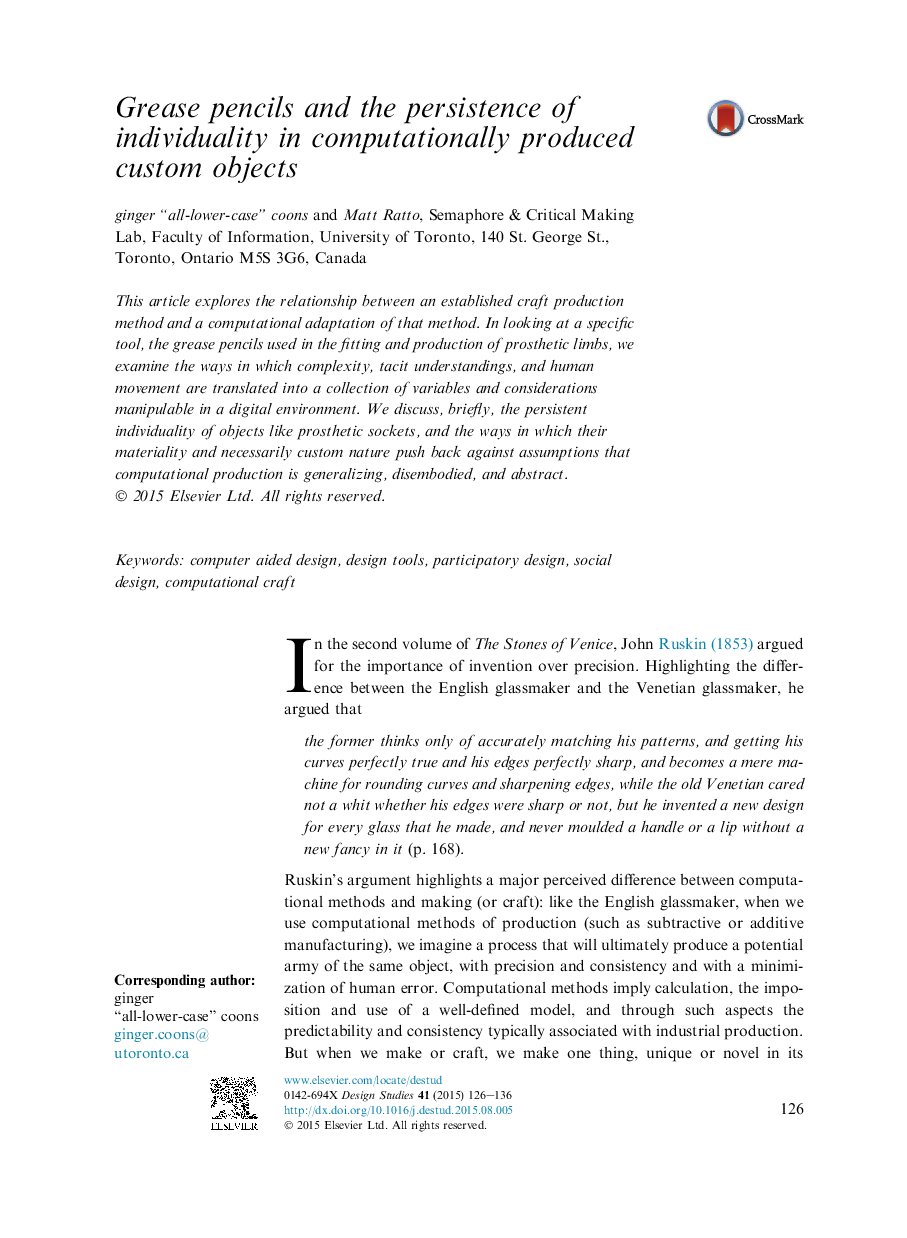| Article ID | Journal | Published Year | Pages | File Type |
|---|---|---|---|---|
| 261471 | Design Studies | 2015 | 11 Pages |
•We analyze the working methods of prosthetists with both manual and digital tools.•The practices of prosthetists resemble other forms of craft labour.•Digital tools that supplement craft should be informed by existing practice.•We detail a new, computationally-aided tool for the production of prostheses.
This article explores the relationship between an established craft production method and a computational adaptation of that method. In looking at a specific tool, the grease pencils used in the fitting and production of prosthetic limbs, we examine the ways in which complexity, tacit understandings, and human movement are translated into a collection of variables and considerations manipulable in a digital environment. We discuss, briefly, the persistent individuality of objects like prosthetic sockets, and the ways in which their materiality and necessarily custom nature push back against assumptions that computational production is generalizing, disembodied, and abstract.
